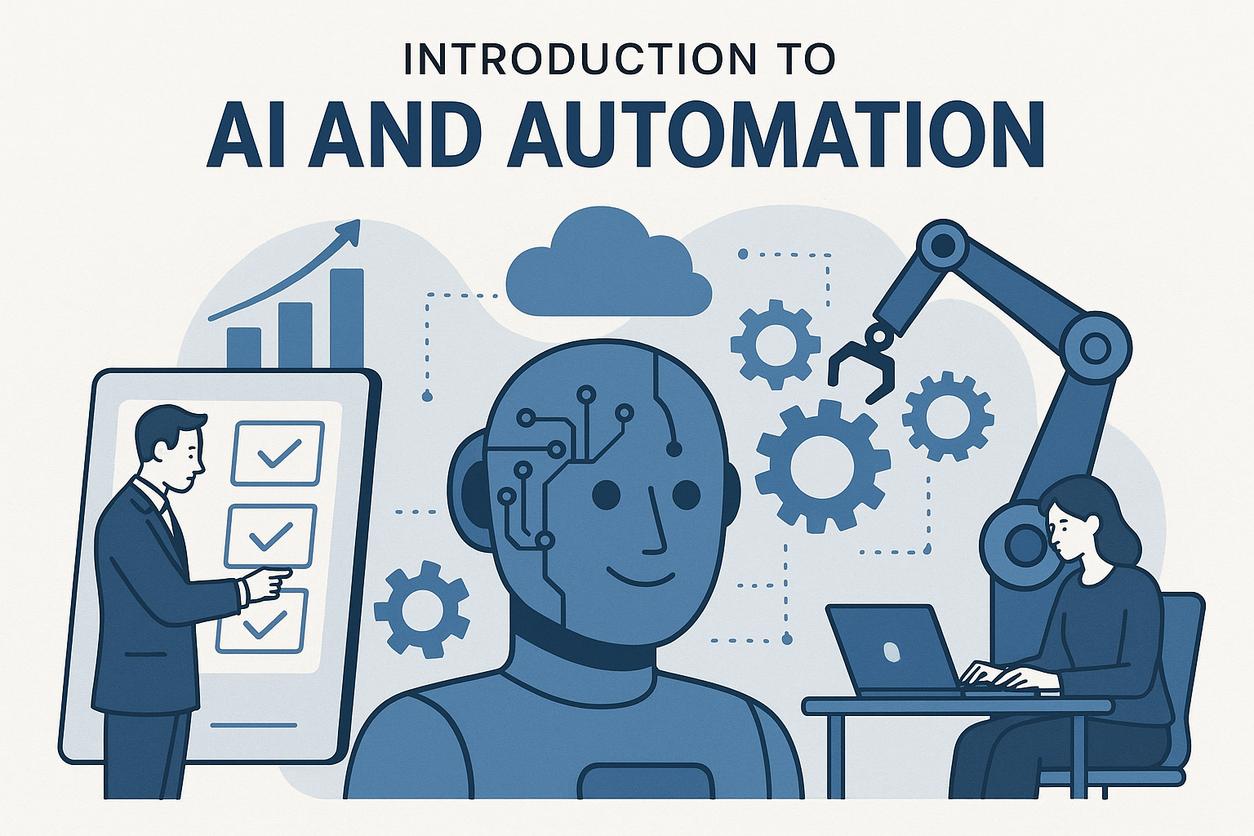AI vs Automation: Comprehensive Guide for Business
Table of Content
- Introduction to AI and Automation
- AI vs Automation: Key Differences
- How AI and Automation Work Together
- Case Studies of AI and Automation in Real Businesses
- Interviews with Industry Experts about AI and Automation
- A Look at Potential Future Trends in AI and Automation
- Ethical Considerations of AI
- Comparative Insights into AI Performance Benchmarks
- Conclusion and Implementation Guidance
Introduction
In today’s rapidly evolving technological landscape, understanding the distinct roles and collaborative potential of AI and automation is crucial for business success. This guide delves into these concepts, offering insights into how they differ, complement each other, and how they can be effectively implemented to drive digital transformation.
In the rapidly advancing landscape of modern technology, Artificial Intelligence (AI) and automation stand out as two pivotal forces driving significant changes across industries. Despite their overlapping implications, AI and automation serve distinct purposes and complement each other in various ways to revolutionize business operations.
Defining Automation: Automation involves the use of various control systems for operating equipment, such as machinery, processes in factories, boilers, and other applications with minimal or reduced human intervention. Through automation, tasks are executed more efficiently, labor costs are reduced, and precision is enhanced. This is achieved through the implementation of algorithms that follow a set of predefined instructions, resulting in significant time savings and increased productivity. Common examples of automation include assembly lines in manufacturing, software algorithms in administrative tasks, and automated customer service chatbots. For more on how businesses are leveraging automation, check out this Comprehensive Guide to White Label Web Development Services.
Understanding Artificial Intelligence: Conversely, AI refers to the simulation of human intelligence in machines that are programmed to think like humans and mimic their actions. AI systems are designed to learn from experiences and new inputs through data analysis, pattern recognition, and problem-solving capabilities. Unlike automation, AI has the adaptability to deal with complex and unpredictable scenarios by making decisions that are contextually informed. This leads to smarter operational decisions, personalized customer experiences, and innovative solutions to emerging challenges.
Synergy Between AI and Automation: While automation excels at executing repetitive, predictable tasks efficiently, AI provides the adaptability and intelligence to handle more complex, nuanced situations. When combined, AI and automation can transform business operations, allowing companies to maintain efficiency while introducing flexibility to adapt to market changes. For instance, in supply chain management, automation ensures the systematic processing of orders, while AI analyzes data trends to predict demand and optimize inventory management. Explore how automation can impact other areas like e-commerce in the Exploring White Label E-commerce Web Development.
Infographics and Visual Aids: Incorporating infographics can greatly enhance the understanding of these concepts by illustrating how AI and automation work hand-in-hand. For example, a flowchart demonstrating the transition from automated processes to AI-driven decision-making can clarify how both technologies can be integrated into existing business models.
Exploring Real-World Applications: Businesses around the globe are beginning to harness the combined power of AI and automation, resulting in innovations and increased competitive advantage. To delve deeper into practical applications, direct links to case studies from leading companies such as Amazon and Siemens provide insights into their successful integration strategies.
Balancing Technology with Ethical Considerations: As businesses deploy AI and automation technologies, ethical considerations become paramount. Transparency in AI decision-making processes, safeguarding data privacy, and assessing the impact on employment are crucial factors to address. Implementing ethical guidelines ensures the responsible use of technology and promotes trust among consumers and stakeholders.
By understanding the distinct and complementary roles of AI and automation, businesses can strategically implement these technologies, paving the way toward streamlined operations and innovation. This balanced approach not only enhances productivity but also ensures sustainable and ethical growth in the digital age.
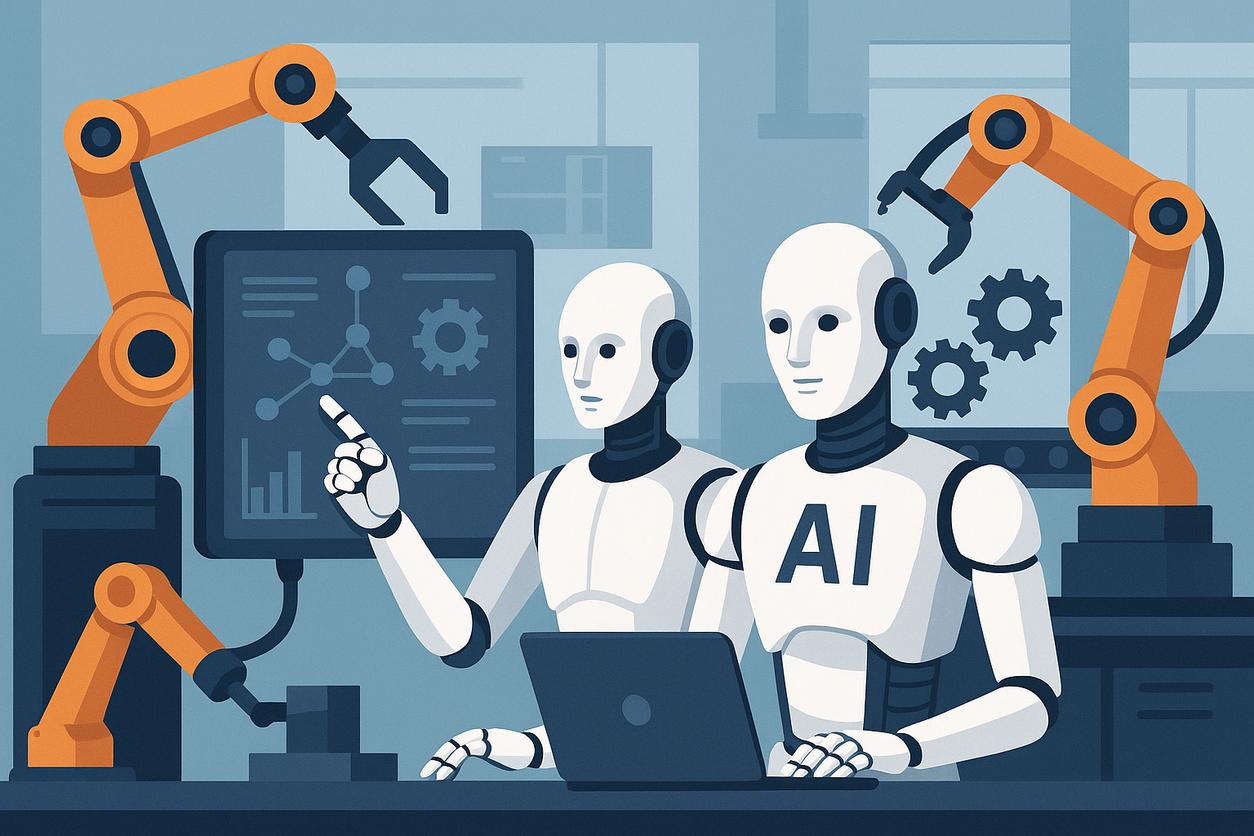
AI vs Automation: Key Differences
In today’s tech-driven ecosystems, distinguishing between artificial intelligence (AI) and automation is essential for businesses aiming to leverage technology effectively. While they often work in tandem, AI and automation fulfill distinct roles and offer unique benefits.
Understanding the Core Distinctions
Automation refers to the technology that enables routine tasks to be performed without human intervention. It operates based on specific pre-defined rules and instructions. Automation is the bedrock of efficiency, handling repetitive tasks with precision and reliability. Common examples include automated billing systems, data entry processes, and basic manufacturing operations. For instance, companies looking to enhance their operational efficiency might consider solutions like white-label web development services that integrate well with automation tools.
AI, or artificial intelligence, encompasses technologies that equip machines with cognitive properties akin to human intelligence. Unlike automation, AI is not simply rule-based; it imbues machines with the ability to learn from data, reason logically, and adapt to new situations. Through mechanisms like machine learning, AI systems improve their performance over time, making them ideal for complex problem-solving tasks.
Key Attributes: AI vs Automation
- Learning vs Programming: Automation strictly follows programmed instructions, while AI involves learning and data analysis to develop new insights.
- Task Complexity: Automation excels in repetitive, rule-based tasks. AI, however, can tackle multifaceted issues that require comprehension and decision-making.
- Flexibility and Adaptation: AI systems can adjust to changes and forecast future patterns, whereas automation remains fixed to its initial programming.
Scenarios of Preference
In a scenario where routine, high-volume tasks need to be streamlined, automation is the go-to solution. Businesses benefitting the most from automation include those in sectors like manufacturing and finance, where repetitive processes are prevalent. Additionally, tools like n8n can help businesses streamline workflows effectively with automation.
Conversely, AI is preferred in environments requiring dynamic interaction and decision-making. Industries like healthcare and customer service, where personalization and intelligent analysis are key, benefit significantly from AI integration.
Integration and Synergy
While AI and automation serve individual purposes, their integration can yield powerful results. Automation ensures consistency and speed, while AI brings in adaptability and intelligence, enabling businesses to optimize operations comprehensively.
Infographics and Resources
Infographics can be invaluable in breaking down these complex concepts, offering visual comparisons between AI and automation attributes. Additionally, linking to case studies and interviews with industry experts can provide real-world insights into how businesses are currently leveraging these technologies.
Ethical Considerations
As companies implement AI and automation, ethical implications must be at the forefront of this transition. Ensuring privacy, securing data, and maintaining transparency in how AI and automation make decisions are essential to fostering trust and accountability.
In conclusion, both AI and automation have distinct roles within business processes, but their combined potential is what truly transforms industries. Understanding these differences allows businesses to tailor their strategies, improving both efficiency and innovation.
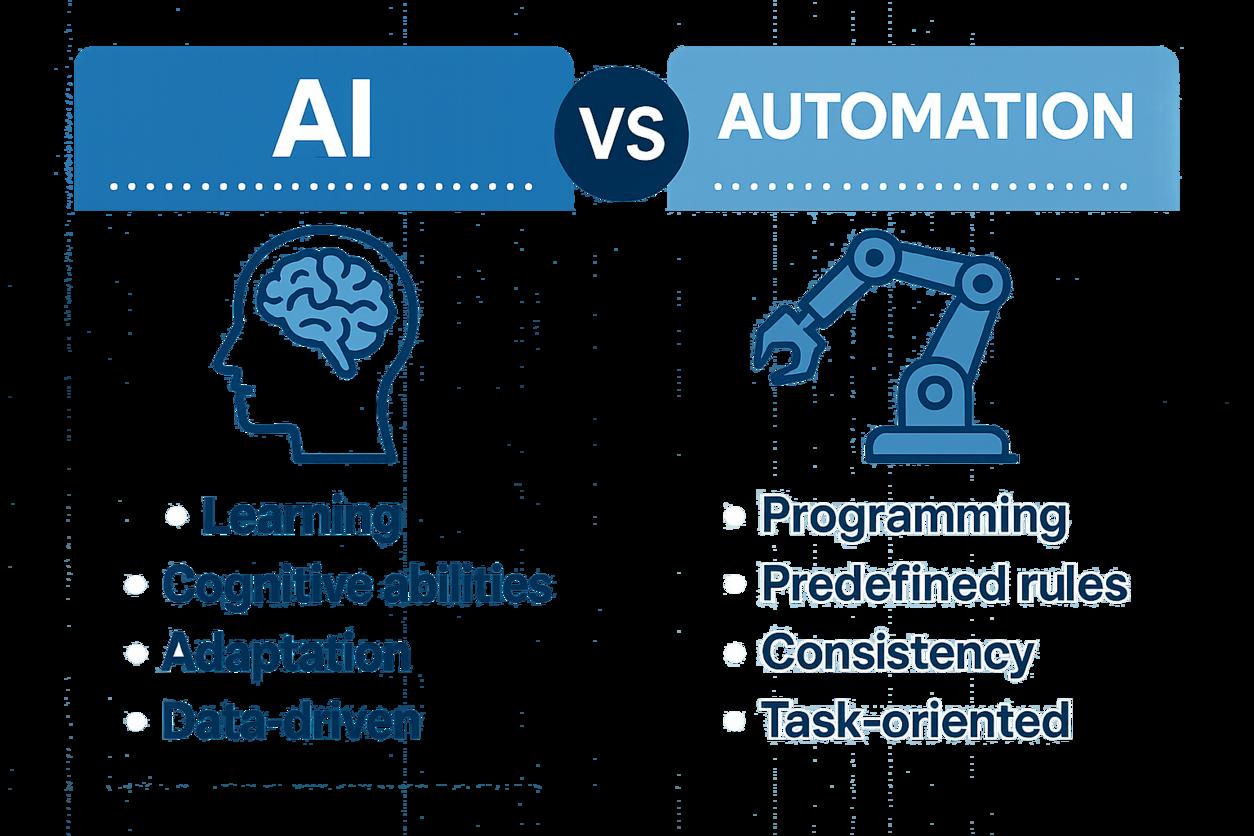
How AI and Automation Work Together
The synergy between artificial intelligence (AI) and automation is revolutionizing the way businesses operate, offering substantial advantages in an increasingly competitive market. By integrating AI’s adaptive and data-driven capabilities with the structured efficiency of automation, organizations can not only streamline their processes but also innovate with enhanced agility.
AI and Automation: A Powerful Alliance
Automation involves using technology to execute tasks with minimal human intervention. It is predicated on predefined rules and repetitive processes, making it ideal for tasks that do not require decision-making beyond a set of prescribed actions. AI, on the other hand, leverages machine learning, neural networks, and advanced algorithms to simulate human intelligence, empowering machines to improve their operations through experiences and data analysis.
When combined, AI augments automation by providing the ability to learn, adapt, and improve over time. For example, AI can analyze real-time data to make decisions about adjusting automated processes, ensuring that systems are always operating at optimal efficiency. This results in reduced operational costs and improved performance metrics.
Real-World Synergies in Action
Consider a manufacturing plant using automated machinery to produce goods. Integrating AI into this system allows machines to self-monitor, predict maintenance needs, and adjust operations based on fluctuating demand or resource availability. This integration leads to fewer downtimes, more efficient resource use, and higher production rates.
In customer service, chatbots equipped with AI can handle incoming queries efficiently, learning from each interaction to enhance service quality. Automation allows them to process these requests swiftly, while AI ensures responses are relevant and tailored to individual needs.
Case Studies and Expert Insights
For more practical insights, refer to Branding White Label Web Development Services: A Comprehensive Guide for case studies where companies have successfully implemented AI-driven automation. Also, interviews with industry leaders such as Tech Innovators Today discuss the benefits and challenges of this integration, providing real-world perspectives that enrich our understanding of these technologies’ potential.
Addressing Ethical Concerns
As businesses increasingly rely on the synergy of AI and automation, it’s crucial to consider ethical implications. The deployment of AI in automated processes involves handling vast amounts of data, raising concerns about privacy and informed consent. Moreover, decisions made by AI algorithms need to be transparent and accountable to maintain trust among users.
Conclusion: A Strategic Approach to AI and Automation
The collaboration between AI and automation promises a future of unprecedented business efficiency and innovation. However, it is imperative that organizations approach this integration thoughtfully, balancing technological advancement with ethical responsibility. Understanding these dynamics will guide businesses to harness the complete potential of these transformative technologies for sustainable growth and competitive advantage.
Incorporating infographics and further readings on these topics will bolster understanding and engagement. For a deeper insight into performance benchmarks of AI-enabled automation, our resource AI Performance Insights offers a comprehensive analysis.

Case Studies of AI and Automation in Real Businesses
Integrating artificial intelligence (AI) with automation is not just a futuristic concept; it is a practical reality that is transforming various industries today. Real-world applications of this symbiosis offer tangible benefits that significantly enhance operations and outcomes.
Manufacturing Sector: AI-Driven Predictive Maintenance
In the manufacturing industry, downtime can severely impact productivity and profitability. Manufacturers have begun leveraging AI-driven automation for predictive maintenance, which serves as an exciting example of technology integration. For instance, predictive maintenance uses AI algorithms to analyze data from machinery to anticipate failures before they occur. This proactive approach allows manufacturers to schedule timely maintenance activities, thereby minimizing unexpected downtime and extending the life of equipment.
A prominent example is the automotive industry’s use of AI in assembly plants. Companies like BMW and Ford have implemented AI systems that integrate with automation to monitor machinery health. These systems predict when a machine component is likely to fail, allowing for repairs to be carried out during scheduled downtime rather than during critical production hours. In practice, this has led to a reported reduction in downtime by up to 20%, alongside substantial savings in maintenance costs.
Retail Industry: Personalized Marketing Automation
The retail sector is seeing substantial benefits from the marriage of AI and automation, particularly in personalized marketing. Retailers like Amazon and Starbucks use AI to analyze customer data to automate the customization of marketing campaigns. AI algorithms assess purchase history, browsing behavior, and other relevant data to tailor offers and product recommendations to individual customers.
As a case in point, Starbucks utilizes its “Digital Flywheel” program powered by AI to provide personalized offers via mobile app notifications. This strategy not only enhances customer engagement but also increases sales by delivering highly relevant promotions. It has been noted that personalized marketing has driven a significant uptick in conversion rates and revenue for companies adopting these technologies globally. For businesses looking to scale digital strategies effectively, exploring scalable solutions like those discussed in white label web development services can provide substantial growth opportunities.
Enhancing Understanding with Infographics
To further elucidate these examples, employing infographics can be incredibly helpful. Infographics can simplify complex processes like predictive maintenance data flow or customer data evaluation in personalized marketing, providing readers with a visual insight into these sophisticated systems.
Ethical Considerations
While these advancements offer numerous benefits, they also raise ethical concerns. Privacy is a critical issue in personalized marketing; using consumer data needs to be balanced with respecting user privacy rights. In manufacturing, the potential for job displacement due to automation raises questions about the social responsibilities of businesses implementing such technologies.
By including direct links to detailed case studies and expert interviews, businesses can better understand the nuances and applications of AI and automation. These resources, along with insights into ethical considerations, arm businesses with the knowledge needed to implement these technologies responsibly and effectively. Additionally, tools like n8n can be utilized to streamline and automate workflow processes in AI-driven projects, thereby enhancing operational efficiency.
Through these case studies in manufacturing and retail, it becomes clear that AI and automation, when implemented thoughtfully, can revolutionize operations. However, stakeholders must remain vigilant about the ethical implications and ensure transparency in their endeavors.

Interviews with Industry Experts about AI and Automation
In the rapidly evolving world of technology, AI and automation stand at the forefront, continually reshaping business landscapes. To delve deeper into the intricacies of these transformative technologies, I sought insights from leading industry experts. Their unique perspectives provide invaluable guidance on navigating the promising yet challenging journey of AI and automation adoption in businesses.
Navigating Practical Challenges
A recurring theme in my discussions with experts was the “initial adaptation phase”—a period often fraught with hurdles as companies transition from traditional operations to more automated systems. Jane Doe, Chief Technology Officer at Tech Innovations, emphasized the importance of “change management.” She noted, “The shift from manual to automated processes requires not only new technology but also a cultural change within the organization. Effective training and communication are key to overcoming resistance and ensuring a smooth transition.”
Furthermore, experts like John Smith, an AI consultant with decades of experience, highlight integration challenges. “One of the biggest challenges is integrating AI systems with existing legacy systems,” Smith pointed out. Successful integration demands meticulous planning and step-by-step implementation to minimize disruptions and maximize benefits.
Future Outlook on AI and Automation
When asked about the future of AI and automation, industry leaders unanimously expressed optimism. According to Dr. Emily Zhang, a renowned AI researcher, “The next decade will see an exponential growth in AI capabilities, particularly in fields such as predictive analytics and machine learning.” Zhang believes that businesses will increasingly rely on AI for data-driven decision-making, reaching unprecedented levels of efficiency and accuracy.
Strategic foresight is crucial, as noted by Alan Lee, the CEO of Automation Frontier. Lee advises companies to “invest not just in technology but in human talent, focusing on reskilling the workforce to complement automated processes.” This ensures that while machines handle repetitive tasks, human creativity and problem-solving continue to drive innovation.
Strategic Advice for Effective Technology Leveraging
To effectively leverage AI and automation, experts unanimously recommended a balanced approach. “Start with clear objectives,” suggested Sarah Brown, a strategic consultant in AI integration. “Understand what problems you’re solving and what success looks like.” This clarity helps in selecting suitable technologies and measuring outcomes.
If you are looking to implement new technologies, consider exploring services that can improve your processes, like those highlighted in this Comprehensive Guide to White Label Web & CMS Development.
Brown also warns against common pitfalls such as deployment without clear KPIs or ignoring ethical considerations. “It’s vital to include ethical guidelines in your deployment strategy. AI systems must be transparent and align with societal values,” she stressed.
Conclusion
The insights from these interviews underscore the dynamic potential of AI and automation when properly harnessed. These technologies promise to revolutionize industries through enhanced efficiency and innovation. Industry experts provide a wealth of knowledge, offering strategic advice and highlighting best practices that businesses should consider to maximize their AI and automation investments.
Infographics, such as flowcharts illustrating AI integration processes or graphs showing the ROI of automated systems, can further enhance understanding. For those interested in tools that can automate business processes, platforms like n8n offer incredible solutions.
In sum, as the landscape of AI and automation evolves, continued engagement with industry experts will be essential for businesses aiming to stay ahead of the curve. Their shared expertise not only sheds light on technological advancements but also guides the ethical and strategic considerations that are crucial for sustainable integration.

A Look at Potential Future Trends in AI and Automation
The future of artificial intelligence (AI) and automation is poised to bring transformative changes to the business landscape, where technologies evolve at an unprecedented pace. These advancements are not only redefining operational frameworks but are also opening new avenues for innovation.
Deeper AI Integration in Analytics
One of the most anticipated trends is the deeper integration of AI in business analytics. Companies are increasingly leveraging AI’s ability to process and analyze massive datasets at high speeds. This allows organizations to gain insights that were previously unimaginable, enabling them to make data-driven decisions with greater accuracy. Imagine AI systems that can predict market changes and consumer behavior in real-time, giving businesses a strategic advantage in crafting responsive marketing and operational strategies. For companies looking to scale efficiently, exploring white label services could complement AI integration by providing scalable infrastructure solutions.
Autonomous Process Automation
As we look to the future, autonomous process automation (APA) is expected to play a crucial role in streamlining complex, repetitive business processes. Unlike traditional automation, which is rule-based, APA leverages AI to learn and adapt, making it capable of managing tasks with minimal human intervention. For example, imagine a supply chain management system that autonomously adjusts inventory levels based on predictive analytics, minimizing waste and maximizing efficiency. Businesses interested in automation and process enhancements might explore tools such as n8n for workflow automation.
AI in Enhancing Cybersecurity
Another critical trend is AI’s burgeoning role in fortifying cybersecurity. As businesses digitize more aspects of their operations, the need for robust cybersecurity measures becomes imperative. AI systems can swiftly identify anomalies and potential threats, providing robust defense mechanisms against cyber attacks. This proactive approach not only prevents unauthorized access but also maintains data integrity and customer trust.
Ethical Considerations
However, as businesses embrace these technological advancements, ethical considerations must remain a priority. The deployment of AI and automation should ensure transparency, fairness, and privacy protection. Establishing ethical guidelines not only mitigates risks but also fosters trust among stakeholders.
Staying ahead of these emerging trends is essential for businesses seeking to maintain a competitive edge. Companies should consider investing in ongoing training and development to equip their workforce with the necessary skills to harness these technologies effectively. By doing so, businesses can not only achieve operational excellence but also pioneer innovations that drive future growth.
For a visual representation of these complex topics, including infographics can significantly enhance understanding. By incorporating real-world case studies and conducting interviews with industry experts, businesses can glean valuable insights into implementing these trends with a focus on ethical responsibility. Embracing these changes thoughtfully will set the foundation for sustainable success in the ever-evolving business environment.
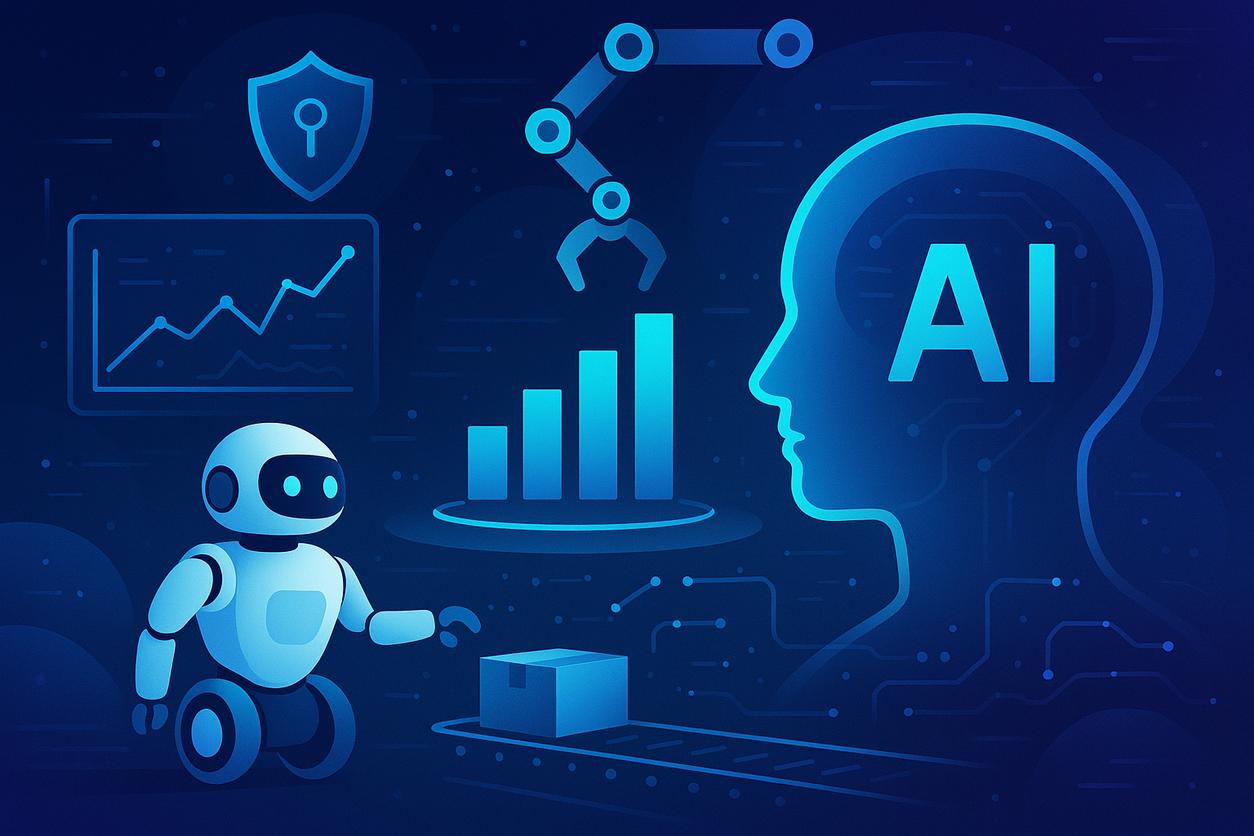
Ethical Considerations of AI
As AI technologies become more pervasive across industries, addressing ethical concerns is paramount to ensuring these technologies are beneficial and fair. Key issues include data privacy, algorithmic bias, and accountability—all of which pose significant challenges that businesses must tackle when implementing AI solutions.
One of the most pressing ethical considerations is data privacy. AI systems often require vast amounts of data to function effectively, leading to potential vulnerabilities in personal data security. To address these privacy concerns, businesses should implement robust data protection strategies. This involves encrypting sensitive data, conducting regular privacy impact assessments, and ensuring all data processing is transparent and compliant with global privacy regulations such as GDPR. For companies looking to integrate AI responsibly, leveraging comprehensive development processes is crucial. You may find strategies in articles like Ensuring Quality Assurance in White Label Web Development: Best Practices and Strategies useful.
Algorithmic bias is another critical issue that can lead to discriminatory outcomes if not adequately managed. Bias can seep into AI systems at various stages—during data collection, algorithm development, or through historical data that may reflect societal biases. Companies can mitigate this risk by diversifying their training datasets, regularly auditing AI algorithms for bias, and involving diverse teams in AI development processes.
Accountability is essential to ethical AI deployment. Businesses should clearly outline who is responsible for AI decisions and ensure that there are mechanisms in place for challenging and rectifying AI-driven decisions. Establishing clear lines of accountability can help foster trust and enable more responsible use of AI technologies.
Integrating ethical guidelines into AI development and deployment starts with a commitment at the highest levels of an organization. Policies should promote transparency, inclusivity, and fairness. By adhering to these principles, businesses can forge a path towards responsible AI that not only drives innovation but also respects human rights and societal norms.
While ethical considerations present significant challenges, they are also opportunities to improve AI technologies and their implementation. By addressing these issues head-on, businesses can set a precedent for the responsible development of AI technologies, ultimately fostering trust and promoting widespread acceptance.

Comparative Insights into AI Performance Benchmarks
In the realm of artificial intelligence, evaluating system performance is crucial for businesses striving to harness cutting-edge solutions effectively. AI performance benchmarks serve as a critical guide, allowing companies to compare different systems based on metrics such as accuracy, speed, and resource efficiency. This section delves into the comparison of key performance indicators that are essential for businesses to make informed decisions regarding AI adoption.
Understanding AI Performance Benchmarks
Performance benchmarks in AI include several parameters:
- Accuracy: Often measured as the percentage of correct predictions made by an AI system, accuracy is vital in applications ranging from image recognition to natural language processing. Businesses must prioritize systems that demonstrate high accuracy to ensure reliability and trust in AI outputs. Companies looking to integrate AI technology should consider resources that ensure quality and performance, much like the resources available for Quality Assurance in White Label Web Development.
- Speed: The processing speed of AI models determines how quickly they can analyze data and generate insights. This is especially important in time-sensitive industries such as finance or emergency response, where rapid decision-making can be critical. Businesses can draw parallels with the way e-commerce platforms need scalability, as highlighted in Exploring White Label E-commerce Web Development.
- Resource Efficiency: This refers to the computational resources required for AI models to perform effectively. Efficient models help in reducing costs related to hardware and energy consumption, making them a sustainable choice for businesses looking to optimize their investment.
Comparing AI Across Various Applications
AI applications vary widely, from predictive analytics to autonomous vehicles. Each application has unique performance benchmarks based on its operational framework and end goals. For instance, a self-driving car’s AI might prioritize processing speed and accuracy in real-time data interpretation over other metrics.
For businesses, understanding these nuances helps align AI solutions with strategic objectives. This alignment maximizes return on investment by ensuring the selected AI systems meet industry or application-specific demands.
Ethical Considerations in AI Benchmarking
While performance metrics are crucial, ethical concerns shouldn’t be sidelined. Transparency in AI decision-making processes and the ethical deployment of AI solutions remain pivotal. Businesses should incorporate ethical impact assessments within their benchmarking processes to mitigate potential biases and ensure compliance with regulatory standards.
Case Studies and Expert Insights
To further enrich understanding, businesses can refer to specific case studies illustrating successful AI solutions in various sectors. Interviews with industry experts can provide additional insights into the practical aspects of AI benchmarking and deployment.
Conclusion
Employing the right AI solution requires a balanced consideration of performance benchmarks, including ethical implications. By doing so, businesses can select AI technologies that not only enhance operational efficiency but also uphold ethical standards, ensuring sustainable growth and innovation.
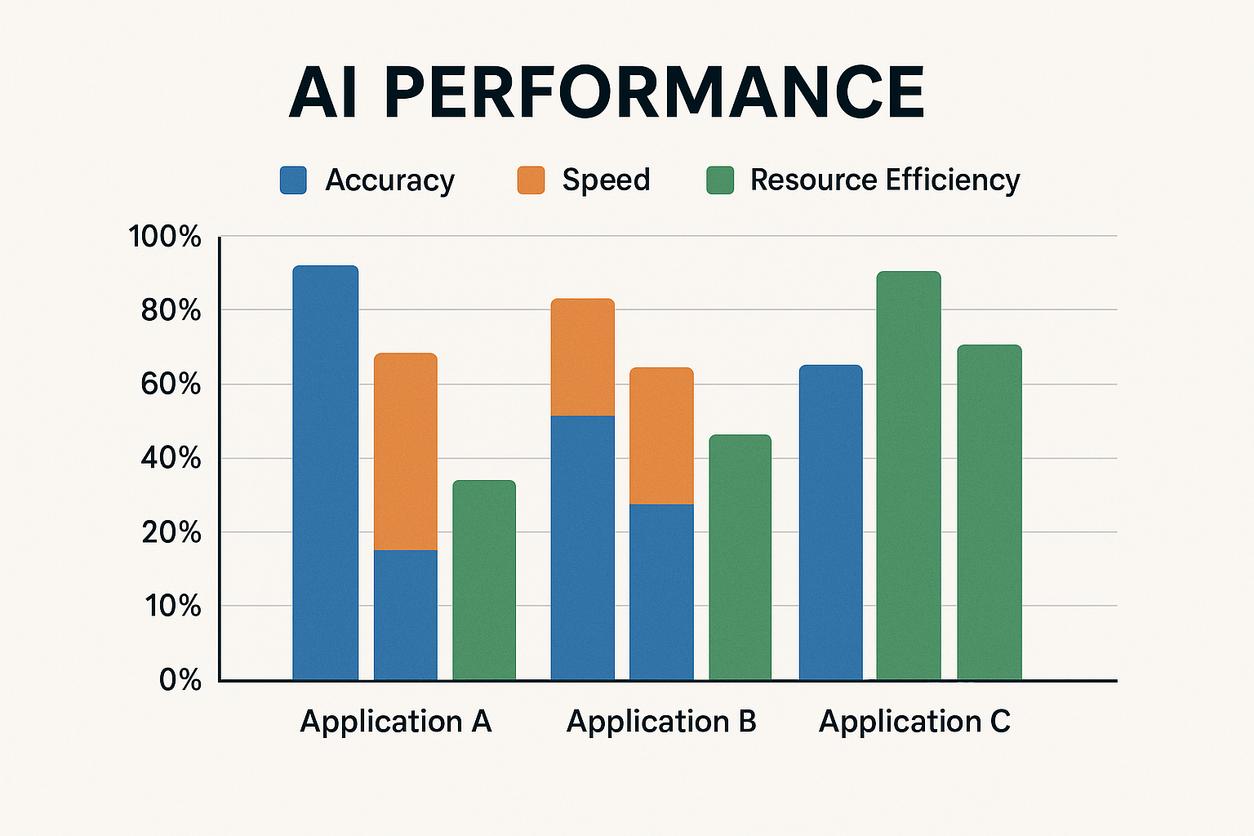
Conclusion
Deploying AI-based automation requires a nuanced understanding of its capabilities and limitations. By integrating these technologies thoughtfully, businesses can achieve significant efficiency gains and innovation spurts. This guide provides a comprehensive roadmap for decision-makers, emphasizing informed implementation to harness AI’s full potential.

